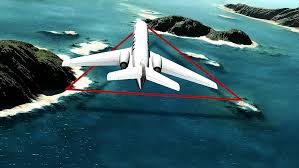When you imagine a ship slicing through the ocean, majestic and powerful, you’re really looking at the brilliance of marine engineering — and at the heart of that engineering is the hull. The hull is the watertight body of a ship, and it plays a critical role in everything from buoyancy and speed to stability and safety.
What Is the Hull?
The hull is the main body of a vessel, including the bottom, sides, and deck (but excluding the masts, superstructure, rigging, and other features). Its primary function is to displace water, allowing the vessel to float, and to provide structural integrity, ensuring the ship can endure the pressures of waves, cargo, and navigation.
Think of it as the skeleton and skin of the ship combined — it holds everything together and enables the ship to perform in the water.
Key Functions of the Hull
-
Buoyancy: A ship floats because the hull is designed to displace a volume of water equal to its own weight. This is known as Archimedes’ Principle.
-
Stability: The hull’s shape and weight distribution help prevent the ship from tipping or capsizing in rough seas.
-
Hydrodynamics: The hull’s design reduces resistance as the ship moves through water, improving speed and fuel efficiency.
-
Protection: The hull acts as a barrier between the ship’s interior and the harsh marine environment, protecting cargo, passengers, and machinery.
Types of Hulls
Different ships require different hull designs, depending on their function and operating environment. Common types include:
-
Displacement Hull: Found in cargo ships, tankers, and cruise liners. These hulls push water aside and are very stable but not very fast.
-
Planing Hull: Used in speedboats and patrol vessels. At high speeds, the hull skims across the water, reducing drag.
-
Semi-Displacement Hull: A hybrid design that combines aspects of both displacement and planing hulls for moderate speed and stability.
Hull Materials: From Wood to Steel
Early ships were made of wood, but modern hulls are constructed from steel, aluminum, or fiberglass, depending on the vessel’s size and purpose.
-
Steel: Strong and durable; ideal for large ships.
-
Aluminum: Lighter than steel; used in high-speed or smaller vessels.
-
Fiberglass: Common in recreational and small commercial boats.
Hull Maintenance and Design Innovations
A ship’s hull must be regularly maintained to avoid corrosion, biofouling (marine organism build-up), and structural damage. Modern coatings and paints help reduce friction and protect against marine growth.
Recent innovations include:
-
Double hulls for enhanced safety in oil tankers.
-
Bulbous bows that reduce drag.
-
Hydrofoils and air-lubricated hulls for improved fuel efficiency.
Conclusion: The Hull as a Maritime Marvel
Though it may not be the most glamorous part of a ship, the hull is its unsung hero. From providing buoyancy to withstanding the relentless force of the sea, the hull is where science, engineering, and design come together. Whether you’re cruising on a luxury liner or watching a cargo vessel at port, remember: it’s the hull beneath the waves that makes it all possible.
